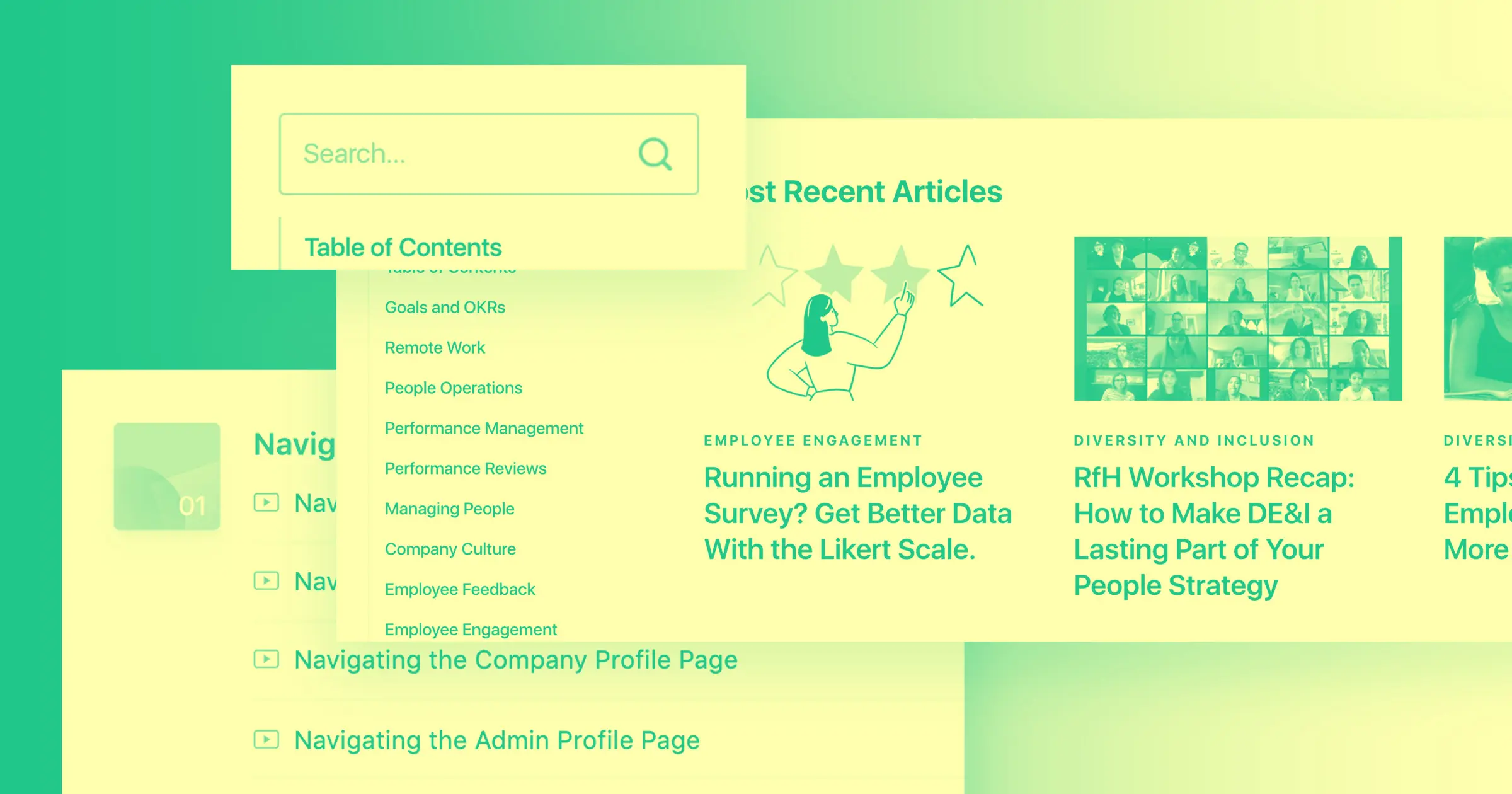Fresh off a $3 million seed funding round, we caught up with Dock CEO Alex Kracov to learn about his company's founding story and how Webflow was part of the inspiration behind his external collaboration tool.
Alex Kracov is a seasoned marketer-turned-founder of software company Dock. On a mission to drive more transparency and collaboration between businesses, we recently had the opportunity to connect with him and learn how he transformed a Webflow-powered tool he built in-house for his former colleagues at Lattice into a full-fledged product and company.
From first marketing hire to Webflow power user
Alex first came face-to-face with Webflow during his time at people management software company, Lattice, where he was an early employee and the very first marketing hire. “I learned a lot about how to build a solid marketing program during my time at Lattice — especially the importance of the marketing website,” Alex said. During the early days at Lattice, the team was using a headless CMS, which gave Alex firsthand experience of the pain that comes with relying on a developer for any and all site changes. This, along with plans to update the site, pushed the team to start looking for a more inclusive web development platform, and after vetting a few solutions, stakeholders in marketing, design, and engineering decided migrating onto Webflow was the best next step.
"I learned a lot about how to build a solid marketing program during my time at Lattice — especially the importance of the marketing website."
Over the next few months, Alex spent his free time running through Webflow University courses and playing around in the tool to gain the competency he needed to manage the Lattice site, familiarizing himself with the features and functions he could test and use on the website. Simultaneously, Lattice was growing and transforming into an enterprise-grade solution. As a result, Alex — who was now owning the company’s marketing campaigns and using Webflow to run the website — was tasked with helping the company identify how it could continue to move up-market over time. Unknown to him at the time, this responsibility would eventually help Alex identify an even bigger problem that would one day become the inspiration behind Dock.
Solving the content sharing problem plaguing sales teams
Prior to founding Dock, Alex noticed two things about the buyer-seller relationship:
- Sales teams often struggled to figure out what content to send over to different prospects
- The experience of reviewing content on the buyer side was overly complicated
“As organizations start selling to bigger companies, the most important thing is enabling the buyer champion. You need to give them the things they need to convince the rest of the organization to buy your product,” he explained. It’s this core objective that eventually led him to use Webflow to build a resource the Lattice sales organization could use.

He built a collection page using a hard-coded template that sales reps could duplicate and customize for different prospects they were reaching out to. Sales team members directly shared links to these duplicated pages — which featured tailored logos and relevant documents, one-sheets, and more — with potential customers during the sales process. And after two years, Alex checked back in on how the team was using these pages: “They had duplicated this page 600+ times, and that’s when I realized this was a product prototype I could take further. Ultimately, Webflow was sort of the inspiration for Dock — it helped me identify a problem and then build a solution for it.”
"They had duplicated this page 600+ times, and that’s when I realized this was a product prototype I could take further. Ultimately, Webflow was sort of the inspiration for Dock — it helped me identify a problem and then build a solution for it.”



















Build websites that get results.
Build visually, publish instantly, and scale safely and quickly — without writing a line of code. All with Webflow's website experience platform.
Transforming the tool from prototype to product
Alex’s rough prototype in Webflow worked well for Lattice’s needs, but because it wasn’t a full-fledged product, there were gaps he wanted to address. He knew there was demand for analytics around usage and that sales folks wanted deeper collaboration and project planning built directly into a tool like this. So after receiving the validation he needed for his original concept from the Lattice team, he had what he needed to tackle a personal dream of his: to start a company. “I’d always wanted to start a company,” he explained. “That’s partly why I joined Lattice — I wanted to learn how to build my own business one day, and after five years, this idea was the turning point that helped me realize it was the right time to take a leap.”
"This idea was the turning point that helped me realize it was the right time to take a leap."
Alex approached two former colleagues — Victor, an engineer, and Luc, the brand designer that had helped him with his original prototype — with the idea for Dock, and the three of them worked on an early version of the tool during the early days of the pandemic. Fast forward to August 2021, and this tight-knit team launched a beta version of the tool, as well as a marketing site made in Webflow. The tool is home to what the team calls “workspaces,” which are pages built from either pre-built Dock templates or a customer’s own custom template. Users can share this workspace between two companies to collaborate and share information, which Alex explains has now evolved into “a place where you can manage the full customer lifecycle.”
For example, users can conduct project planning or customer onboarding directly within Dock. There’s commenting access, mutual action planning, analytics, CRM integrations, and more — all built directly into the product. “It has transformed into a collaborative workspace where people can manage different processes — from enterprise sales, customer onboarding, fundraising data rooms, and so much more. Users can ultimately customize it to their company or their own process in the ways they need.”
What’s on the horizon for the Dock team
Today, Dock is working with early-stage companies looking to build and develop more formalized processes around customer support and onboarding for clients. “We’re a good market fit right now for companies that have a working product, some processes in place, and who are looking to formalize and scale their sales and customer success programs,” Alex shared. So far, this has primarily been tech companies — organizations that typically adopt new products faster and are accustomed to a digital ecosystem — as well as agencies and service firms. “But we also have some larger organizations in our customer base who use our tool to manage hundreds of onboarding tasks, for example, and we’re able to make that experience more engaging and collaborative for them,” he continued.
It’s no secret that internal productivity tools — from Microsoft to Google and Notion — have become essential to growing businesses. But to Alex, the gap that Dock is able to fill is the lack of external tools that help support sales teams working with customers, agencies working with success teams, and the likes. As he puts it: “The north star of Dock today is being the one external collaboration platform that really helps companies work better with their customers.”








.jpeg)






















